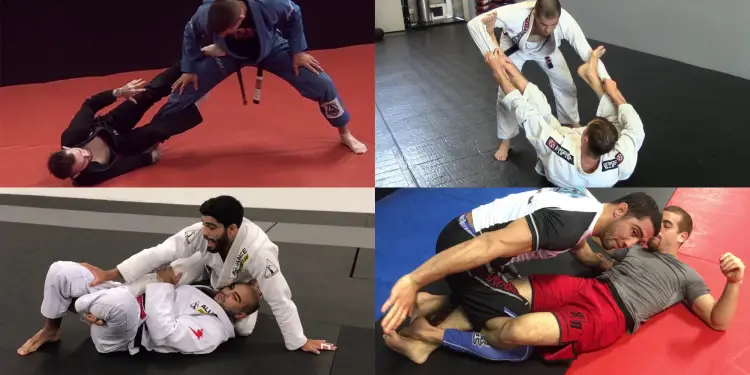When you first join a BJJ gym it can feel incredibly overwhelming to find out that there are dozens of different basic guards and several variations of each one as well. It’s part of the reason why newer people will often struggle to pass guard when they begin, because they’ll be training with people who might prefer different guards to one another. Likewise, it can be difficult to play off your back if all you know is one specific guard and your partner is able to force you into a position where a different guard would be more appropriate. Rather than getting lost in the sheer number of guards available, follow this guide to understand the basic positions you’ll encounter.
For more of our BJJ guides that explain the different aspects of the sport, click here.
Basic BJJ Guards: The Ultimate Guide
There are dozens of different basic guards used in BJJ and plenty of small variations available within them as well. Although there are some simple unifying concepts that will help new starters to play guard, it’s always helpful to know what each guard really looks like. This can help when you’re in a class and the coach starts explaining potential transitions between guards or even when they’re explaining how to pass guard too. With the knowledge of what the coach is referring to, their advice or instruction will then make a lot more sense in the moment. While there are several different ways to distinguish between guards, one of the simplest is to know that each guard can be either a full or a half guard.
Basic Full Guards In BJJ
Full guards are called that because they offer you the ability to have control over both legs of your opponent, or to have ‘full’ control over both of their legs. Although there are many full guards available in BJJ, a lot of them can be grouped together into more generalized or basic version rather than looking at specific details. All of the full guards listed below can be used in no gi grappling, although some slight modifications might need to be made in order for them to remain effective.
Traditional Closed Guard
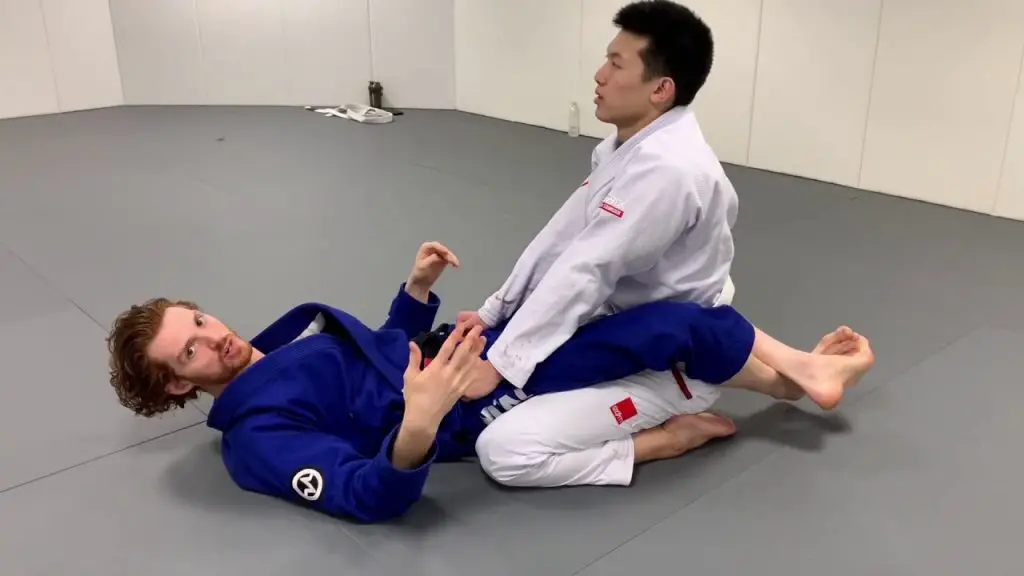
The first guard that many new starters to BJJ are introduced to is ‘closed guard’ and although there are actually several different closed guards, it’s the traditional version of the position that most are introduced to. Closed guard requires you to wrap both legs around the waist of your opponent while they are kneeling in front of you, with your hands used in various ways to break down their posture and set up attacks. There are many variations of the traditional closed guard like the sideways version and high guard, but they all rely on keeping your legs connected in order to control your opponent.
Butterfly Guard

Butterfly guard is one of the most common guards that you might see used in high-level BJJ competition, while also being a basic position beginners will learn. It requires the use of what is referred to as butterfly hooks with both legs, which are when you place a foot inside an opponent’s thigh. These hooks are then used to elevate an opponent and create space, while the arms are often used to break down an opponent’s posture and set up attacks. Butterfly guard is one of the most common guards seen in no gi grappling, because of it offers the ability to attack both the upper and lower body in equal measure.
X Guard
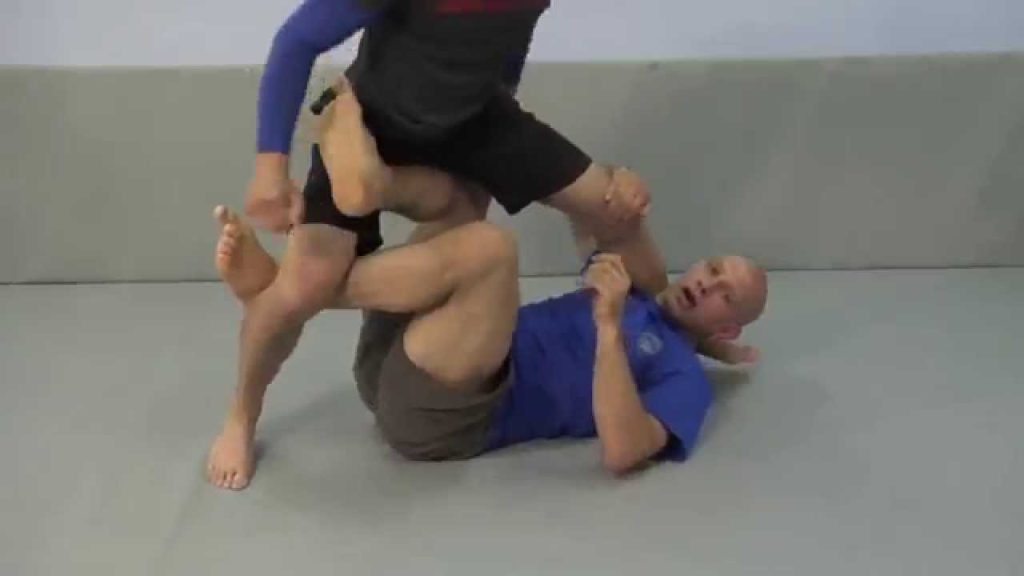
X-guard is often used to attack the lower body, and it’s usually seen employed against a standing opponent. It requires you to be underneath the opponent and perpendicular to them, with one of the opponent’s legs either tucked into your armpit or held on the top of your shoulder. Your legs are then laced around the opponent’s other leg, with the foot of the leg closest to them hooked on the front of their thigh and the other foot hooked on the back of their knee. Your knees are then both pointed outwards, securing control over the far leg. While X-guard is one of the basic guards used in BJJ, it has many variations that include the position of the leg closest to your head and the grips used with the free hand.
Single Leg X

Single Leg-X is one of the few basic guards that is used exclusively on a standing opponent in BJJ, offering complete control over one leg. The guard requires you be underneath your opponent with one of their legs firmly trapped within your armpit. The idea is to then raise your hips as high as possible so that one leg laces around the back of your opponent’s leg and connects to their hip, while the other leg is inside their thighs with the foot tucked behind the opponent. The free hand can then be used to control the other leg, or to facilitate other transitions and attacks.
De La Riva
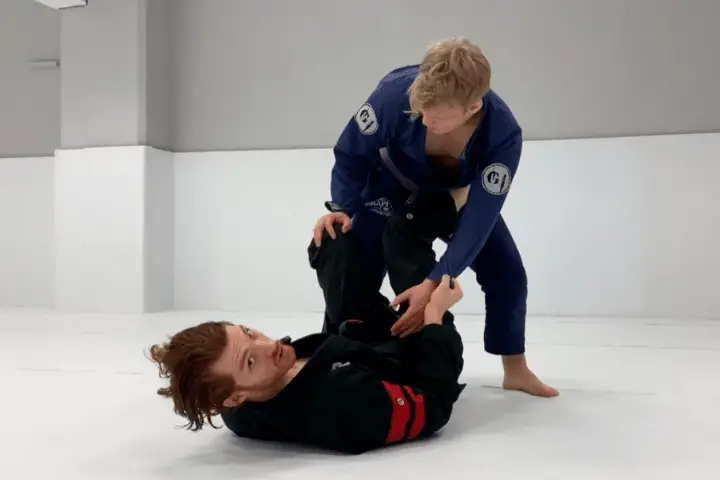
De La Riva guard is one of a handful of basic guards that is named after a specific BJJ practitioner, in this case Ricardo De La Riva. It’s generally used against a standing opponent and requires one hand to control the back of an opponent’s ankle, while your leg on the same side is laced around the outside of that leg and hooked in the back of the knee. The other leg is then used to push off the inside of the other thigh in order to create space, while the other hand can be used to control several different areas on the opponent like their collar or either sleeve. There are a few variations of De La Riva with different grips, but the hook around the back of the leg is the key detail that remains the same.
Gi-Specific Full Guards
Although many of the basic full guards available in BJJ can be equally effective without the use of the gi, that is not universal. Some guards have actually been designed specifically to take advantage of the clothing in different ways, offering better control of the opponent as a result. The only downside to these guards is that because they rely heavily on the clothing, they are not really used in no gi grappling at all. Some grapplers have made use of the positions for brief moments but generally speaking, the majority of high level competitors will never consider any of these guards when competing in a no gi match. There are also dozens of variations of other guards that become lapel guards, as they rely on the use of the bottom of an opponent’s lapel to modify an existing guard.
Collar and Sleeve Guard
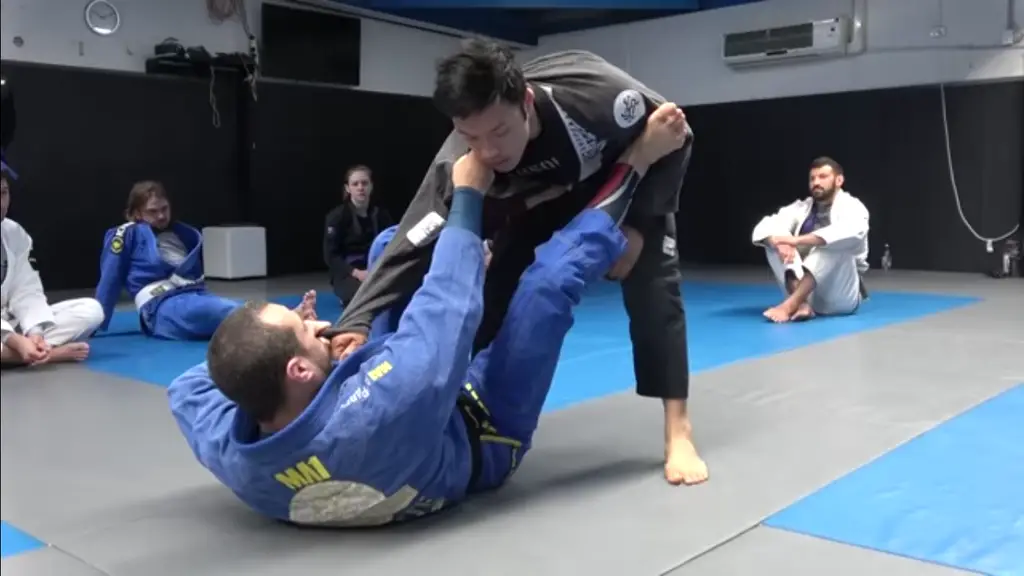
Collar and Sleeve guard is one of the most basic and most important guards to master when beginning your BJJ journey in the gi. The most common version of this guard requires one hand to control the sleeve of the opponent while the other hand controls the far-side collar, hence the name. The leg on the same side as sleeve-control is then placed on the hip while the other leg is placed on the furthest bicep. There’s dozens of different variations, including the use of the lasso where the leg on the same side as sleeve-control is laced around that arm in order to secure it in place.
Spider Guard
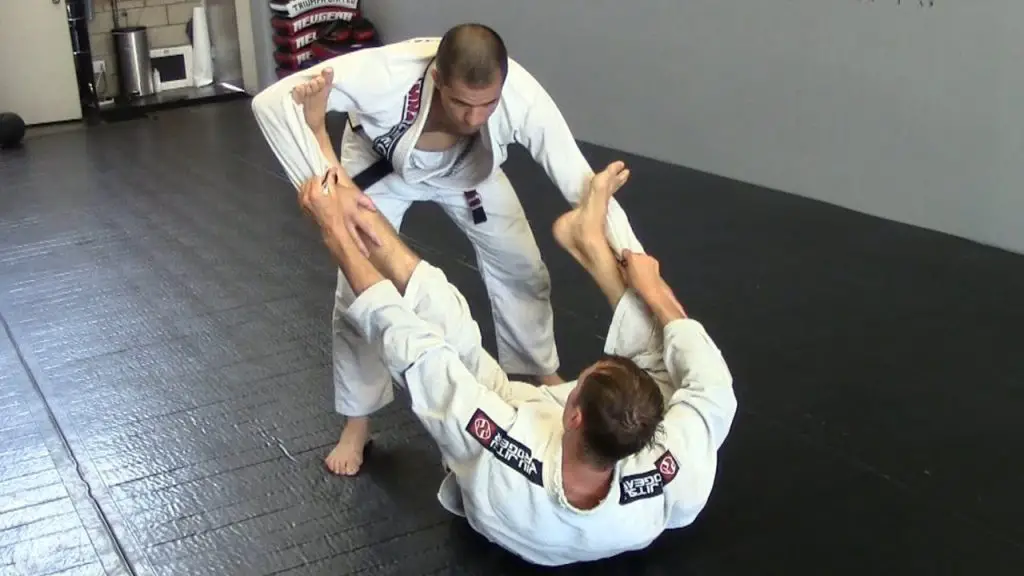
Spider guard is similar to Collar and Sleeve guard, although it is completely symmetrical. Both hands are used to control the sleeve of the opponent, while both legs are then placed on the inside of their biceps on the same side. This allows for incredible control over an opponent’s balance and the way that it’s used to manipulate an their body is similar to how you would move a marionette puppet. Although it might seem like the most simple of all BJJ guards at first glance, it’s actually very difficult for new starters to master the basic principles that allow the guard to work. Variations of spider guard also include the use of lasso-control.
Basic Half Guards In BJJ
Half guards are called that because they only offer you the ability to have control over one of the legs of your opponent, or to have control over ‘half’ of their legs. There are many different half guards available throughout BJJ and the most basic of them are able to used in both gi and no gi grappling. The best grips to use will change depending on whether they are being used in gi or no gi, but the general principles will remain the same and the adaptations make little difference to the effectiveness.
The Knee-shield
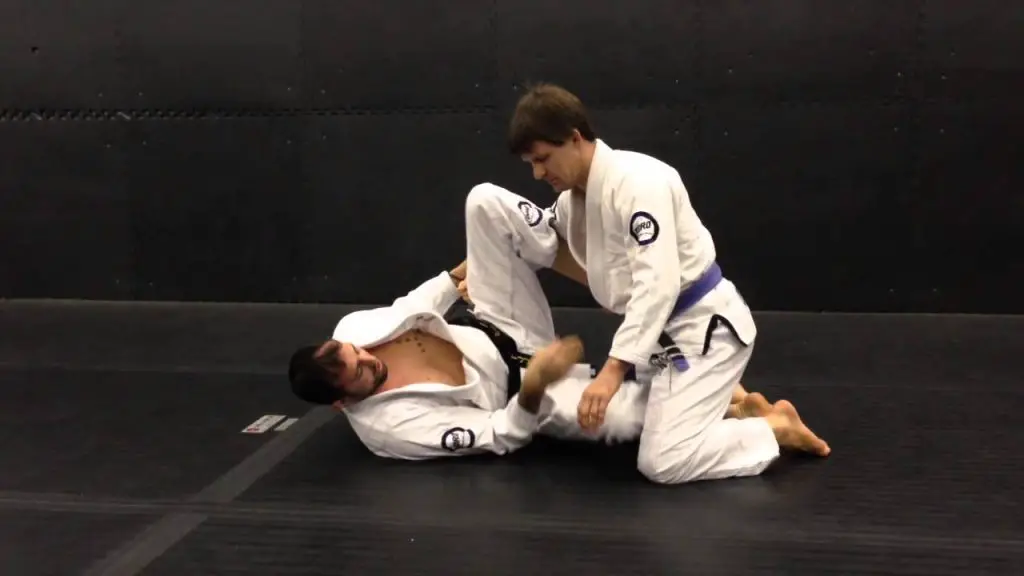
The knee-shield is one of the most effective basic half guards and this can be demonstrated by how frequently its used in high-level BJJ competition. The traditional version of the knee-shield requires one of your legs to be placed in between the opponent’s legs and laced around the back of one knee, while your other leg stays anchored to the opponent with the knee in the chest and the foot hooked on their back. The hands are then generally used to frame against the opponent while supporting that leg, or to set up attacks. The differences between variations of the knee-shield are generally in the position of the leg being used as the shield, and this can be seen most obviously in Z guard.
The Lockdown
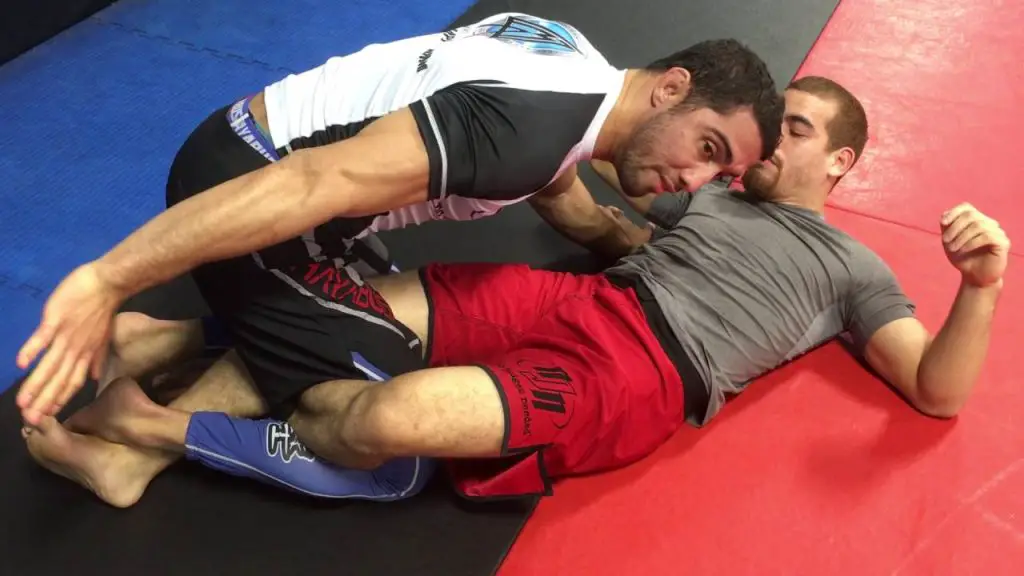
The lockdown is one of the signature basic guards used by 10th Planet students, and it was originally popularized by top BJJ competitor Eddie Bravo himself. It requires the legs to be locked up in a similar configuration to the triangle choke, with the outside leg being laced across the back of the opponent’s knee and hooked into the knee of your other leg. That other leg is then slid under the opponent’s ankle in order to secure control over that leg completely, while the hands can be used in a variety of different ways. Most often, they are placed on the opponent’s hips to perform the whip-up or wrapped around the opponent as an underhook.
Half Butterfly
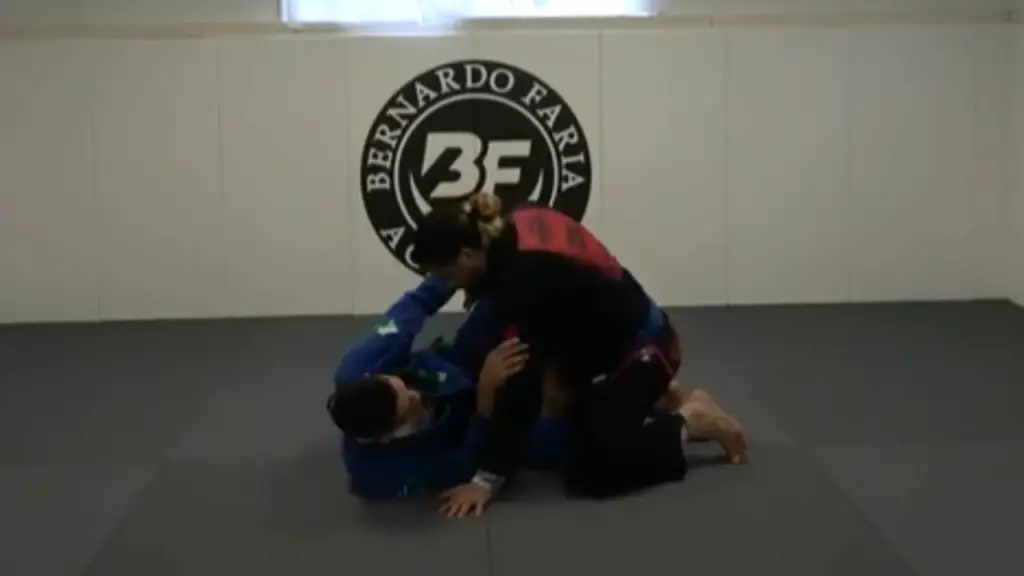
Half butterfly is a half guard that focuses on utilization of the same butterfly hooks that are found in butterfly guard. While one leg is placed in between the opponent’s legs and laced around the back of one of their knees, the other leg is then slipped inside the opponent’s legs as well. That second leg is the one that is used as a butterfly hook, with that foot on the inside thigh of the same leg that is being controlled. Much like full butterfly guard, half butterfly is one of the best basic guards in BJJ for elevating an opponent and getting underneath their hips.
Deep Half Guard
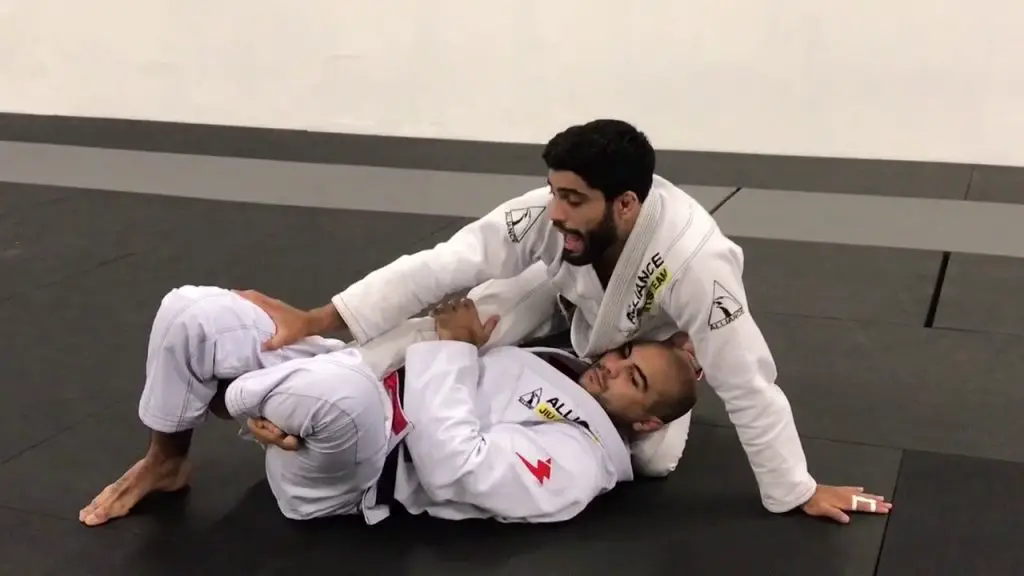
Deep half guard is one of the most popular of all basic guards among older BJJ practitioners, owing to the fact that it doesn’t require any flexibility or athleticism. It requires you to get completely underneath your opponent, facing up at them with both legs trapping one of theirs and your head connected to their other thigh. The arm closest to them is then underhooking the trapped leg, while the hand of the other arm is tucked underneath that leg too. There are also different versions of deep half guard using the lapel of the opponent and with different configurations of the legs.
Reverse De La Riva
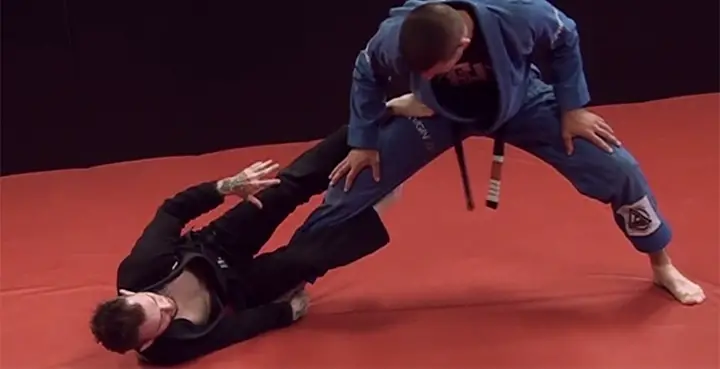
Out of all of the basic half guards available in BJJ, Reverse De La Riva guard is the only one that is used exclusively on a standing opponent. It shares a lot of similarities with De La Riva guard, except the leg being used as a hook on the back of the opponent’s knee is inside their legs instead of outside it. The hand of the arm on the same side as that hook is then used to control the back of the opponent’s ankle and the other leg is positioned on the opponent’s hip of the same leg. Your other hand can then be gripping any number of different areas that all give different offensive options.


